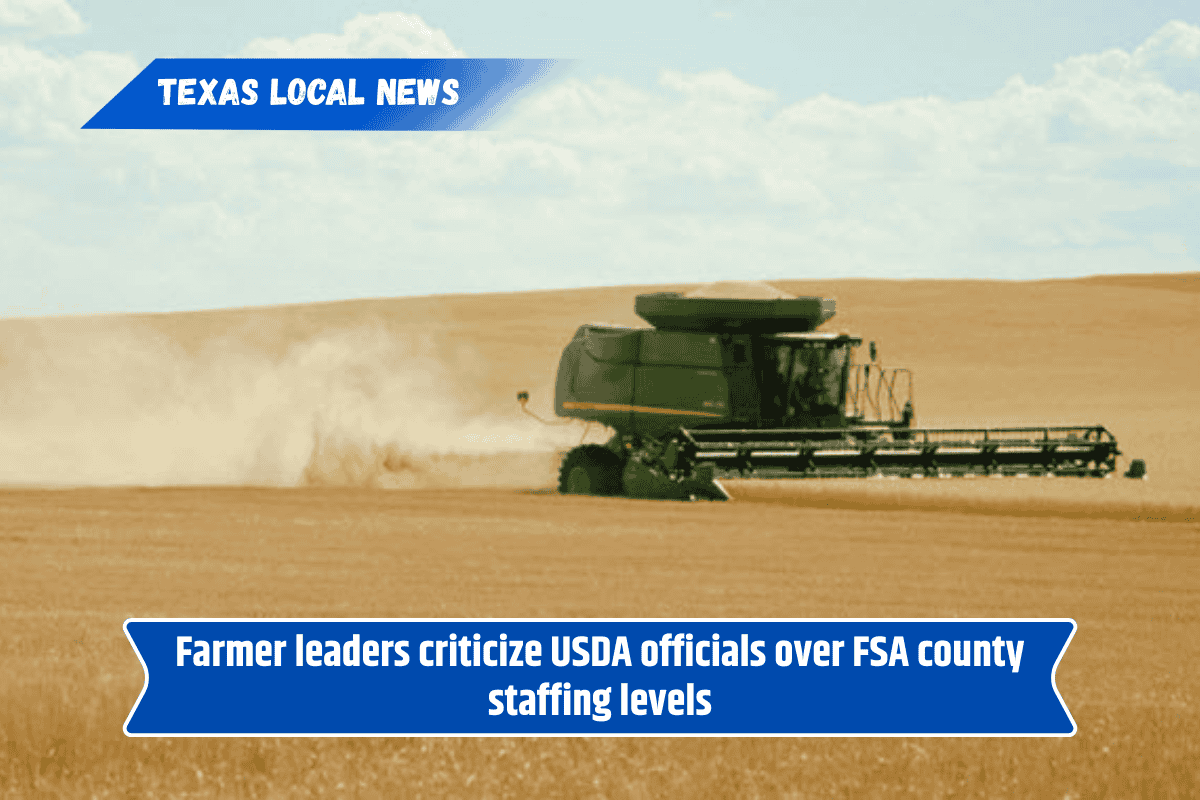The association that represents Farm Service Agency (FSA) county committees nationwide is disputing top USDA officials’ assurances that local offices have enough staff to implement new farm bill initiatives.
The National Association of Farmer Elected Committees (NAFEC) maintained in a news release that FSA offices “are critically understaffed,” despite USDA officials’ public denials.
At the Farm Progress Show in late August, Deputy Secretary Stephen Vaden refuted the premise that FSA offices are understaffed. Vaden stated that USDA would not request temporary or permanent FSA personnel levels.
Nonetheless, NAFEC executives stated that FSA authorities have reported in recent meetings that county office employee staffing levels are now under 6,000, down from several thousand more just a few years prior. There are almost 2,000 local USDA Service Centers across the country.
“NAFEC has County Committee members in every county in the country, and we are consistently hearing that our county office staffs are severely understaffed,” stated Jim Zumbrink, President of NAFEC and a grain and poultry farmer from Ohio.
“As such, our staff will find it very difficult to perform the complex work of the new farm bill, combined with disaster programs and ongoing programs, with the speed agriculture producers in America, both expect and desperately need.”
Since taking office, the Trump administration has pushed to remove probationary personnel from the USDA and give buyouts to senior officials throughout the department’s bureaus. Despite this, USDA officials have stated that the staff cutbacks will have no impact on farmer services.
USDA officials, including Vaden, recently stated that the quickness with which FSA offices delivered catastrophe payouts is the reason why FSA offices are not understaffed.
However, NAFEC noted that USDA personnel “failed to provide an accurate picture of what it takes to get to the point of issuing payments.” A full year’s worth of work in FSA offices enabled the administration to quickly issue checks based on all of the work completed in 2024 and 2025.
This work has yet to be completed for the new programs, and FSA cannot simply give out checks without acreage reports, eligibility forms, farm record revisions, leases, and so on.”
It should be noted that the Biden administration began offering relief to producers based on their acreage and crop insurance reports in order to decrease the time required to file disaster aid applications.
NAFEC mentioned some of the reports received from other states. In Texas, the state with the most county FSA personnel, counties say that there are “many offices” in Texas that do not have county executive directors, and other counties now have minimal people to manage programs.
One major difficulty is that the One Big Beautiful Bill Act’s provisions will require FSA staff to add and enroll up to 30 million new base acres countrywide.
“The new farm bill would necessitate the establishment of millions of new base acres, which will be a significant undertaking.
We also know that ongoing initiatives such as the Livestock Forage Program (LFP), which is vital to our nation’s livestock producers, need a significant amount of staff time to run,” said Kevin Dale, a retired county executive director from a large beef-producing county in Oklahoma.
For example, Dale explained, “With my staff of myself, two permanent program assistants, and a full-time temporary employee, it took us about six months to enroll, review leases and eligibility forms, obtain county committee approval, and pay our 700-plus Bryan County livestock producers.
Currently, this Oklahoma office has only two staff. “It will be impossible to issue payments quickly under this program without additional staffing.”
David Senter, a legislative consultant for NAFEC and president of the American Agriculture Movement, also weighed in.
“We are experiencing a farm crisis unlike any we have seen since the late 1970s, when farmers drove tractors to Washington, DC. We need every resource available to defend our agricultural sector. “Having adequate staffing in every FSA office across the country is an important part of that protection,” the Center stated.
Bob Braden, a NAFEC officer and corn and soybean grower in Iowa, stated that the recent buyouts had left FSA offices not just “depleted of warm bodies,” but also with a significant amount of experience and knowledge leaving the agency.
“Replacing this experience will take a good amount of time,” Braden told me.
Jim Densberger, a NAFEC officer and maize planter from Nebraska, summed it nicely. “We want to ensure that the situation is addressed prior to the crisis, not after it occurs. Our office staff is working hard to do everything they can with decreased manpower and new programs on the horizon to manage.
Without more staff to do the work, our employees and county elected committees may face criticism for not being able to provide funding as promptly as usual. Now is the moment for our agricultural groups to raise the alarm.
